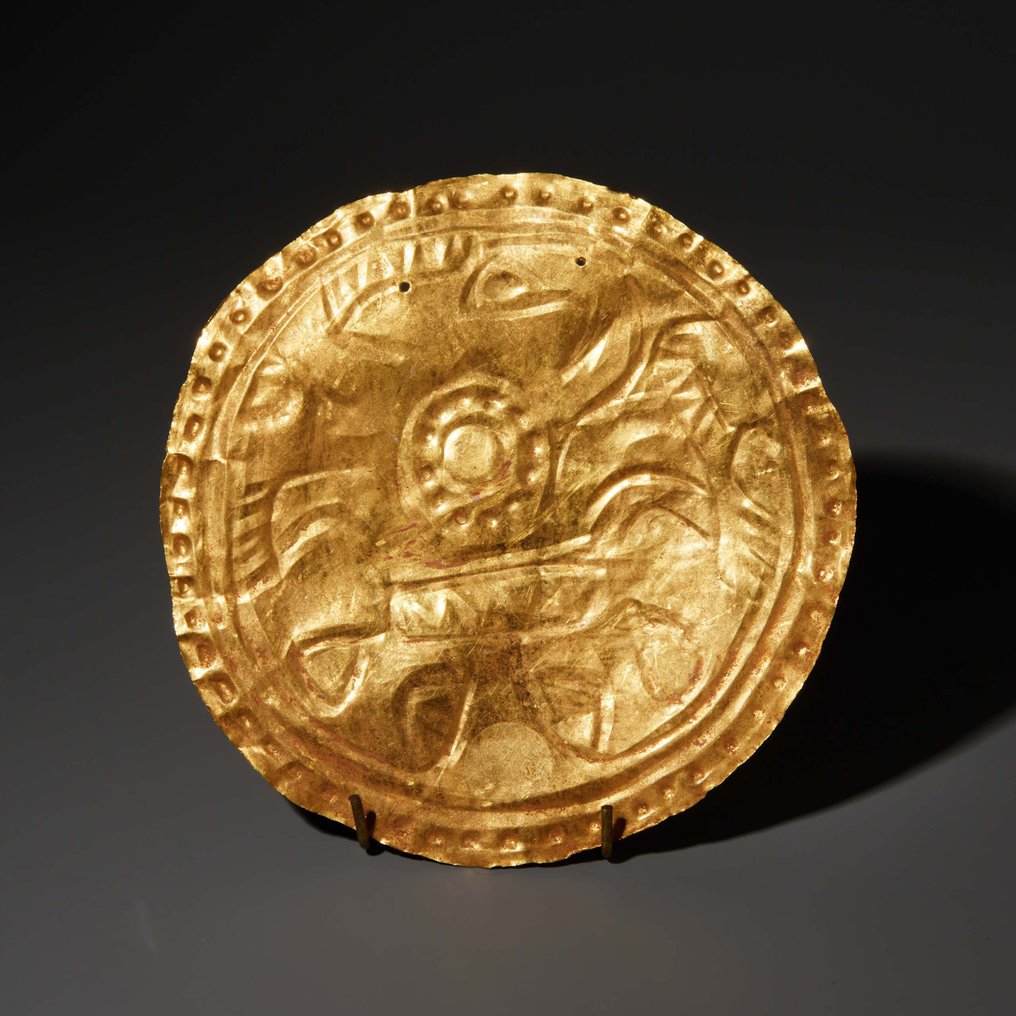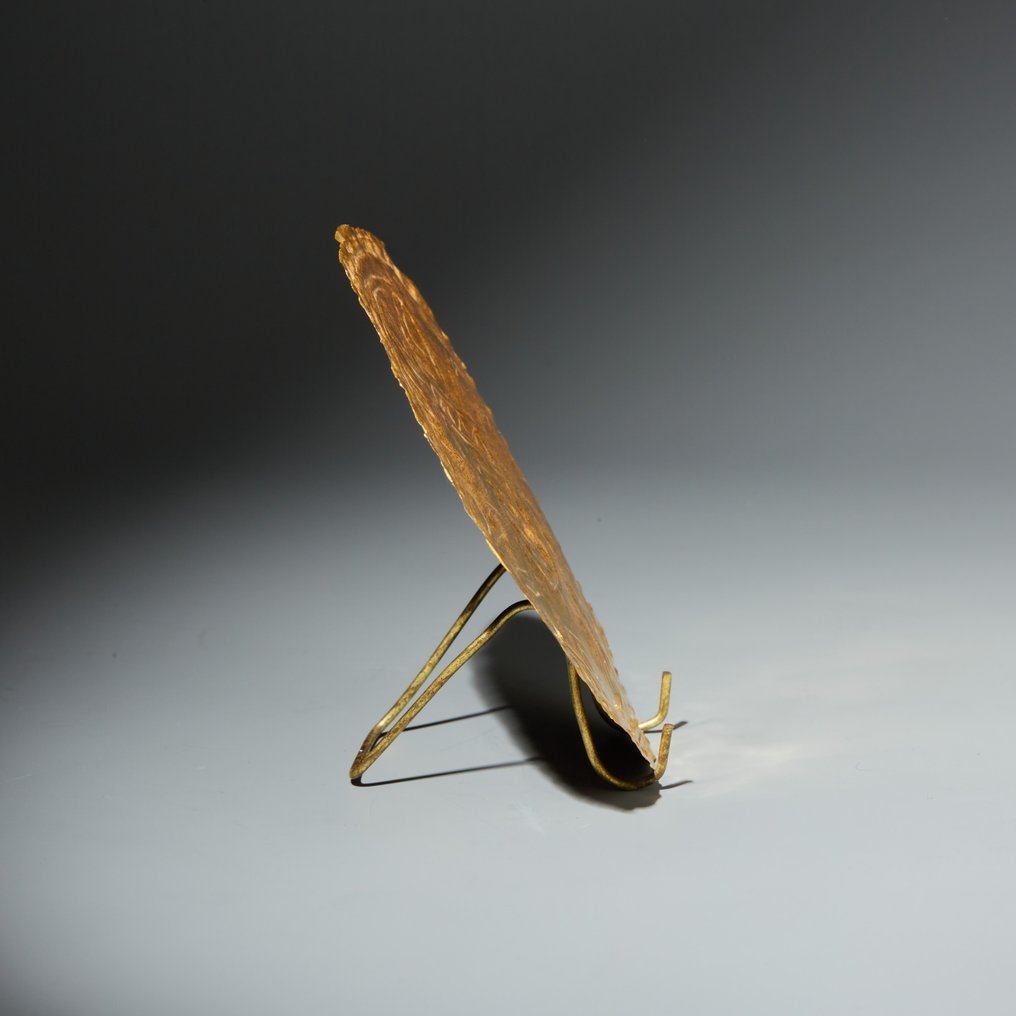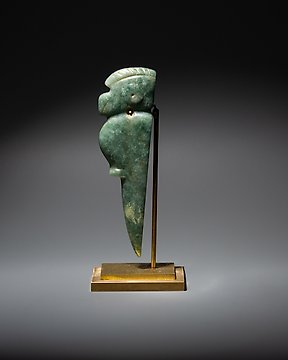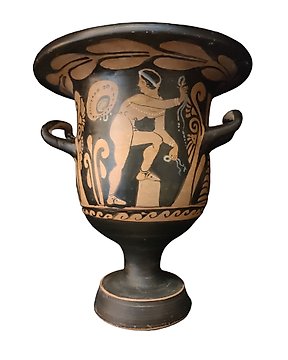
迪基斯 - 奇里基, 哥斯达黎加 金 梦幻般的装饰品动物光盘。公元 700-1550 年。 9.6 厘米。西班牙进口许可证。
Catawiki不断地更新其网站的技术。 您目前正在使用不是最新的浏览器。 为了让您获得最佳的浏览体验,请更新您的浏览器。
您可以使用以下切换按钮设置Cookie偏好设置。您可以随时更新您的偏好,撤回您的合意,并在我们的Cookie政策中查看我们和我们的合作伙伴使用的Cookie类型的详细说明。
编号 84871039



Disc
- Very fine -
Diquis - Chiriqui, Costa Rica, 700-1550 AD.
Gold.
10 cm. 13.54 Grams.
PROVENANCE:
Banks - Primitive, Inc, Maryland, USA, 30 September 1994.
Romy Rey Collection, London. 1970.
CONDITION: Intact
The Diquis culture arose in the territory of what is now Costa Rica, along the coasts of the Pacific Ocean and Caribbean Sea and in the inland mountains and valleys. This area is a resource-rich tropical forest, although the Pacific watershed has a dry summer season. The word diquis means Great Waters or Great River in the Boruca language, and the delta of the great Diquis River is a major feature of the region’s geography.
The Diquis culture is well known for its fine metalwork, particularly in gold and in the gold-copper alloy known as tumbaga. These metals were used to produce large quantities of finely worked pendants, bracelets, ornaments, earpieces, and adornments for clothing, many with images of jaguars and eagles. Other finds attribute to this culture include funeral masks and figurines, most representing birds. Apart from their work in gold, the Diquis are renowned for their stone sculptures, such as the large stone spheres found near cemeteries and the jaguar-shaped corn grinders, which display influences from groups that inhabited the territory of modern-day Colombia. Stone statues and effigies depict dead individuals and chiefs, carrying trophy heads or in positions of prayer. Others are male, female, or figures of indeterminate sex that are naked but marked with incisions that represent adornments such as necklaces and bracelets, body paint, and tattoos. The Diquis culture produced reddish-brown ceramic vessels that were decorated mainly by modelling and often included a tripod base. Decoration often takes the form of crocodiles or fishes. These ceramic pieces are often found alongside other vessels painted with red and black on a cream background and featuring simple geometric motifs, and other very thin-walled works modelled in animal shapes.
Notes:
The seller guarantees that he acquired this piece according to all national and international laws related to the ownership of cultural property. Provenance statement seen by Catawiki.
The seller will take care that any necessary permits, like an export license will be arranged, he will inform the buyer about the status of it if this takes more than a few days.
The piece includes authenticity certificate.
The piece includes Spanish Export License.
Disc
- Very fine -
Diquis - Chiriqui, Costa Rica, 700-1550 AD.
Gold.
10 cm. 13.54 Grams.
PROVENANCE:
Banks - Primitive, Inc, Maryland, USA, 30 September 1994.
Romy Rey Collection, London. 1970.
CONDITION: Intact
The Diquis culture arose in the territory of what is now Costa Rica, along the coasts of the Pacific Ocean and Caribbean Sea and in the inland mountains and valleys. This area is a resource-rich tropical forest, although the Pacific watershed has a dry summer season. The word diquis means Great Waters or Great River in the Boruca language, and the delta of the great Diquis River is a major feature of the region’s geography.
The Diquis culture is well known for its fine metalwork, particularly in gold and in the gold-copper alloy known as tumbaga. These metals were used to produce large quantities of finely worked pendants, bracelets, ornaments, earpieces, and adornments for clothing, many with images of jaguars and eagles. Other finds attribute to this culture include funeral masks and figurines, most representing birds. Apart from their work in gold, the Diquis are renowned for their stone sculptures, such as the large stone spheres found near cemeteries and the jaguar-shaped corn grinders, which display influences from groups that inhabited the territory of modern-day Colombia. Stone statues and effigies depict dead individuals and chiefs, carrying trophy heads or in positions of prayer. Others are male, female, or figures of indeterminate sex that are naked but marked with incisions that represent adornments such as necklaces and bracelets, body paint, and tattoos. The Diquis culture produced reddish-brown ceramic vessels that were decorated mainly by modelling and often included a tripod base. Decoration often takes the form of crocodiles or fishes. These ceramic pieces are often found alongside other vessels painted with red and black on a cream background and featuring simple geometric motifs, and other very thin-walled works modelled in animal shapes.
Notes:
The seller guarantees that he acquired this piece according to all national and international laws related to the ownership of cultural property. Provenance statement seen by Catawiki.
The seller will take care that any necessary permits, like an export license will be arranged, he will inform the buyer about the status of it if this takes more than a few days.
The piece includes authenticity certificate.
The piece includes Spanish Export License.








